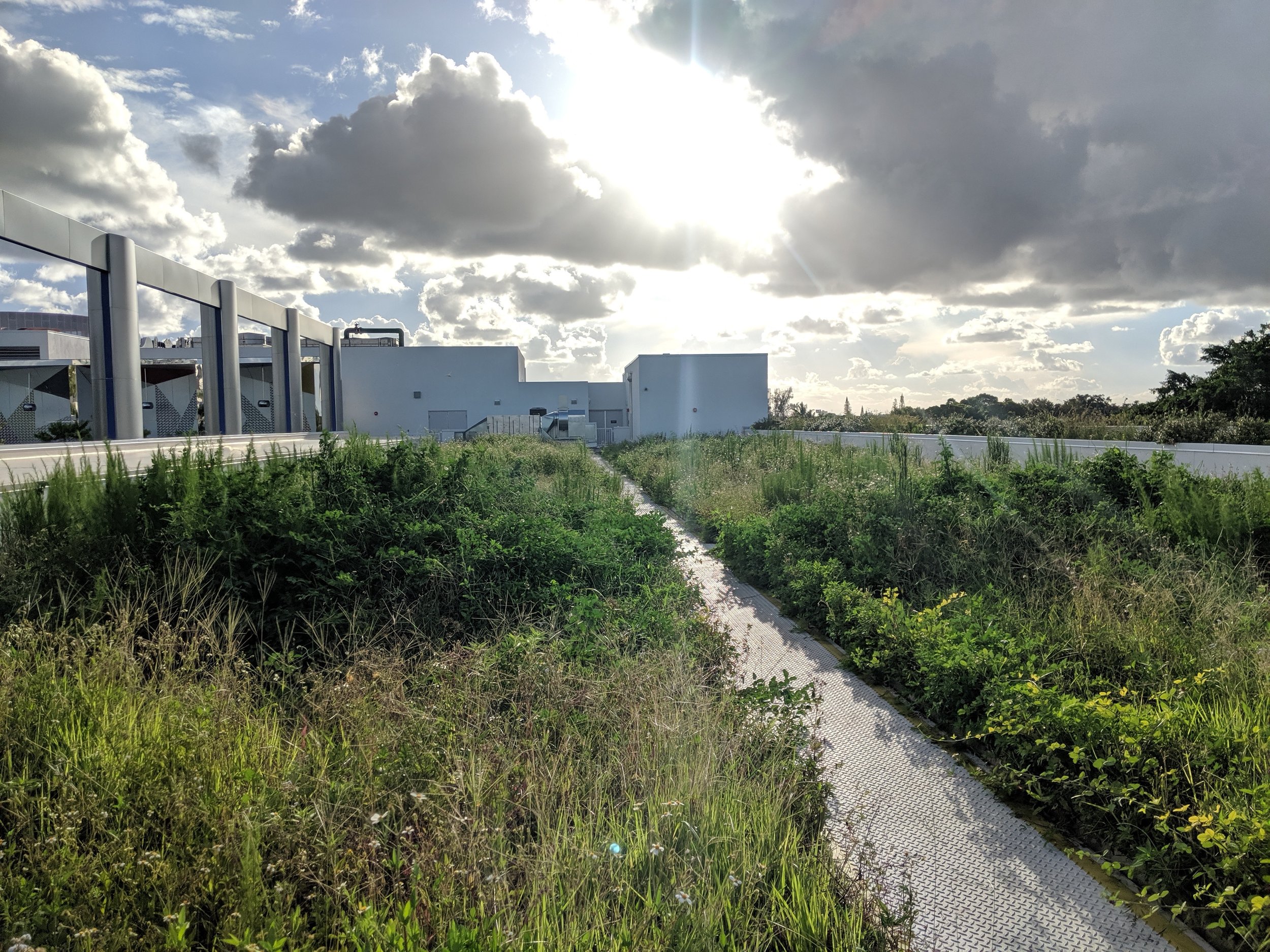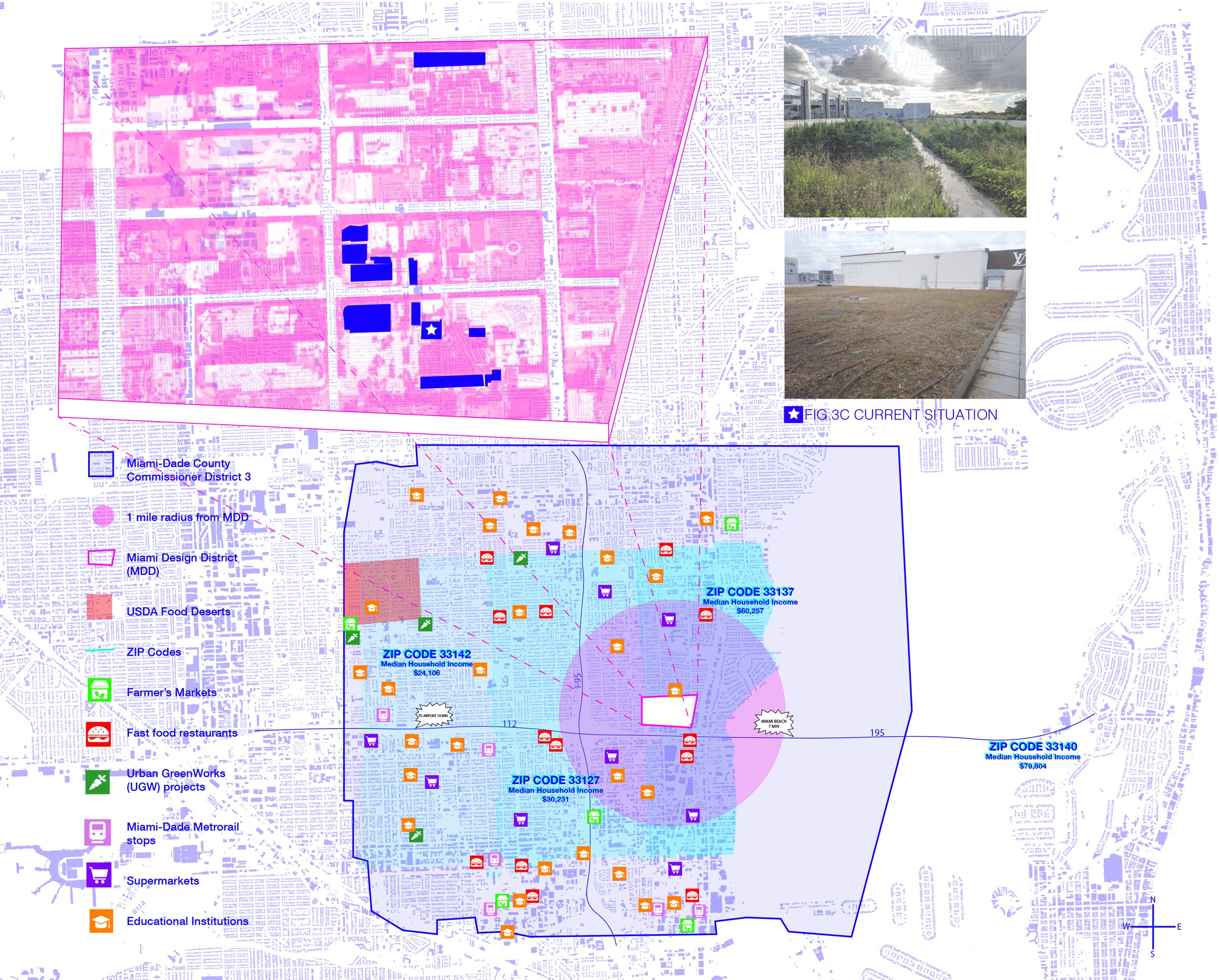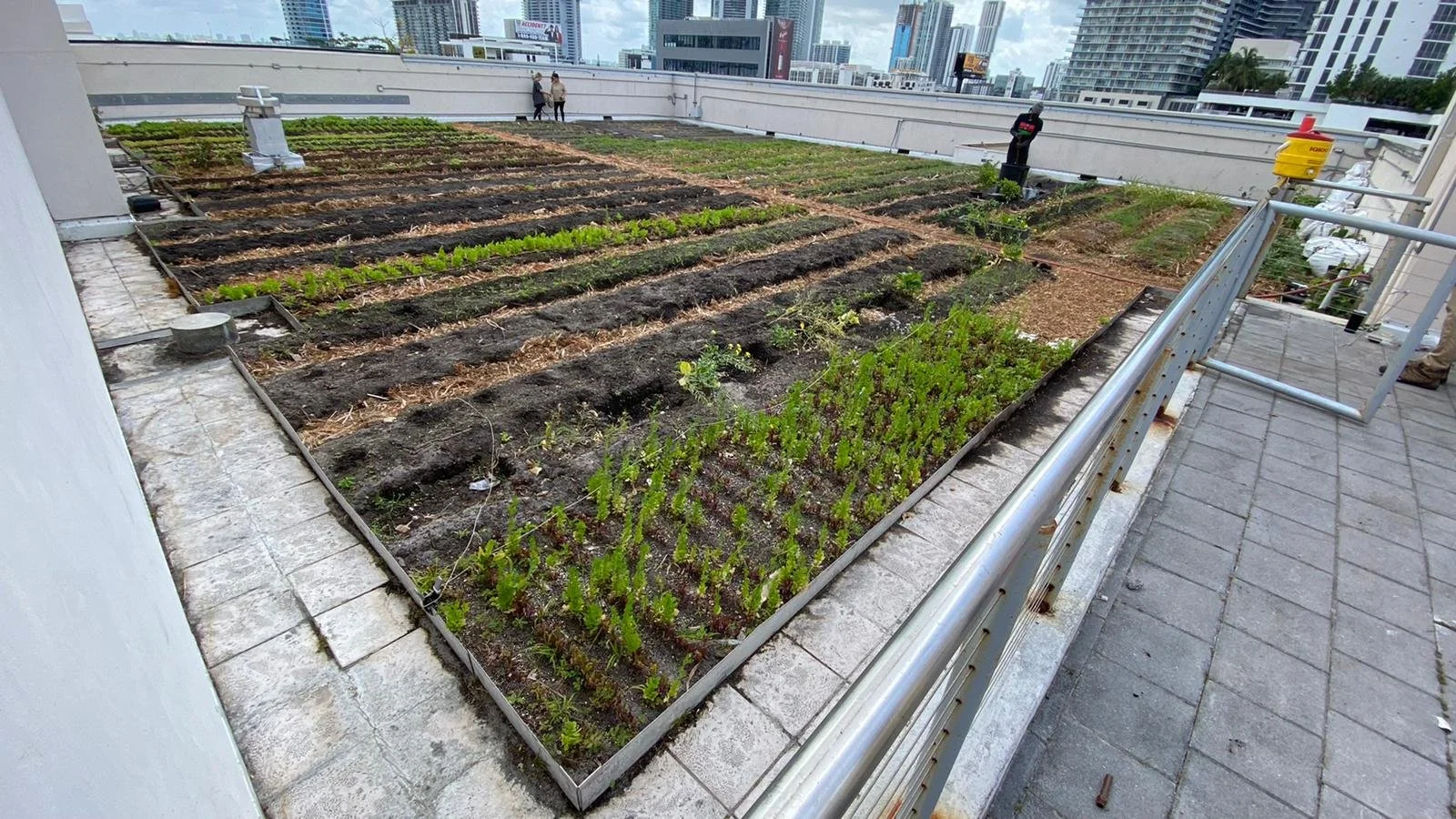
Edible Roofs – Reimagining Miami’s Food Future
Background
Miami’s vibrant culture and natural beauty coexist with systemic challenges, including high poverty rates and food insecurity. Growing up in this environment shaped my early interest in sustainability. I began volunteering at my local community garden, harvesting subtropical fruits in a USDA-designated food desert. This sparked a deeper curiosity: How will Miami feed itself?
In 2019, I joined a collaborative effort with SJB to address this question, becoming a project lead for an initiative to transform unused rooftops in Miami’s Design District into productive, sustainable urban farms.
Goal
Edible Roofs is an agri-tech initiative that aims to farm 45,000 square feet of rooftop space in the Miami Design District. Using GIS data, we mapped neighborhood demographics—focusing on access to fresh food, schools, crime rates, and income disparities—to identify areas of need.
The vision: create a scalable circular food model by distributing rooftop-grown produce to nearby communities and partnering local restaurants—building equity and resilience into the urban food system. The project launched with a 3,000 SF pilot in 2021 and, by 2022, had entered its second growing season and partnered with four local restaurants for fresh food distribution.
Process
User + Site Research
We began by identifying food deserts across Miami, using GIS mapping to understand who was most affected and how to reach them. We mapped correlations between lack of access and socioeconomic vulnerability to pinpoint impact zones.
Data Visualization
To communicate our findings, I designed a series of interactive maps and visual graphics that translated complex data into digestible insights—making the case for rooftop agriculture as both a food justice and climate resilience strategy.
Insight Framework: FRUIT
We used SJB’s Food Resilience Urban Infrastructure Tools (FRUIT) framework to shape our action plan. FRUIT is an AI-powered planning tool that analyzes social, political, and economic indicators to support site-specific, net-zero urban agriculture strategies.
The FRUIT model includes:
Aggregate Data – Raw and metadata collection
Market Assessment – Food supply chain analysis via GIS
Engineering Analysis – Live District Information Model (DIM)
Community Engagement – Real-time food system visualizations
Nutritional Planning – Data-informed growing/planting guides
Local Food Production – Smart agriculture and urban farmer networks
Integrated Design – Built-in risk assessment and planning tools
Implementation: From Concept to Rooftop Farm
We broke ground on a 3,000 SF rooftop farm by installing soil layers, irrigation systems, and natural compost inputs like coconut husk fiber. We planted a rotating crop schedule of subtropical produce—testing yield, resilience, and community response.
Innovation: Bio-sensors & Smart Farming
To optimize production, we’re testing Lightweight Modular Regenerative Agricultural Systems (LMRAS)—sensor-enabled units for vertical farming, aquaponics, and greenhouse control.
Each module includes IoT sensors tracking:
Soil pH and moisture
Air quality and lighting
Energy and water use
These are linked to the local Wi-Fi network and integrated into the FRUIT platform for real-time performance visualization and scenario modeling.
Assessment & Tools
We’re also using the CRUNCH platform (Climate Resilient Urban Nexus Choices) for scenario modeling, helping us align rooftop farming with citywide climate goals. CRUNCH supports:
Nutritional gap analyses
Adaptive planting schedules
A “Photos for Aid” program to crowdsource environmental data
Simulations to assess food-energy-water nexus outcomes



